Travel Norway by Train: A traveler’s guide to Norway train travel, including an overview of Norway rail pass options, including the Eurail Norway pass and the Interrail Norway Pass. Also includes itineraries, including the best train trips in Norway
Disclosure: This website contains affiliate links. That means we earn a commission when you use the links on this site to book a hotel, buy your travel insurance, purchase your Eurail train pass, etc.. If you’d like to learn more about how this works, you can read more under our Disclaimer page. Please note, Rail Europe provided us with complimentary rail passes for this trip.
If you’re planning a trip to Norway, we invite you to join our Facebook group dedicated to travel in Scandinavia/the Nordics. It’s a great place to ask questions and get help and advice from Scandinavia and Nordics travel experts!!
A couple of years ago, Lonely Planet named Europe’s top 10 most scenic train journeys. Not surprisingly to anyone who has visited the country, the first two on the list can be found in Norway.
Norway’s well-developed railway network stretches from the southern tip of the country to above the Arctic Circle, offering incredible views of rolling hills, steep mountains, lakes, and majestic fjords along the way. And while this diverse landscape makes Norway such a special country to visit, it also makes it very hard to get around.
When we were planning our summer trip to Norway, we started with the idea of renting a car. And while a self-drive itinerary through Norway sounds tempting, we realized it also has some significant downsides. If you rent a car, chances are you’ll spend a lot of time with your nose in the GPS, while also trying to maneuver the narrow, winding mountain roads. Quite often, higher altitude roads will also close down due to bad weather. And that’s not even touching on the cost: driving in Norway can be quite expensive.
However, if you chose to tour Norway by train, we realized, you’ll be able to sit back, relax and enjoy the spectacular views. Trains in Norway will transport you comfortably with big reclining seats, free WIFI, power outlets and quiet cars if you want to relax, making traveling around Norway by train a comfortable, affordable, and very scenic alternative to driving yourself around the country.
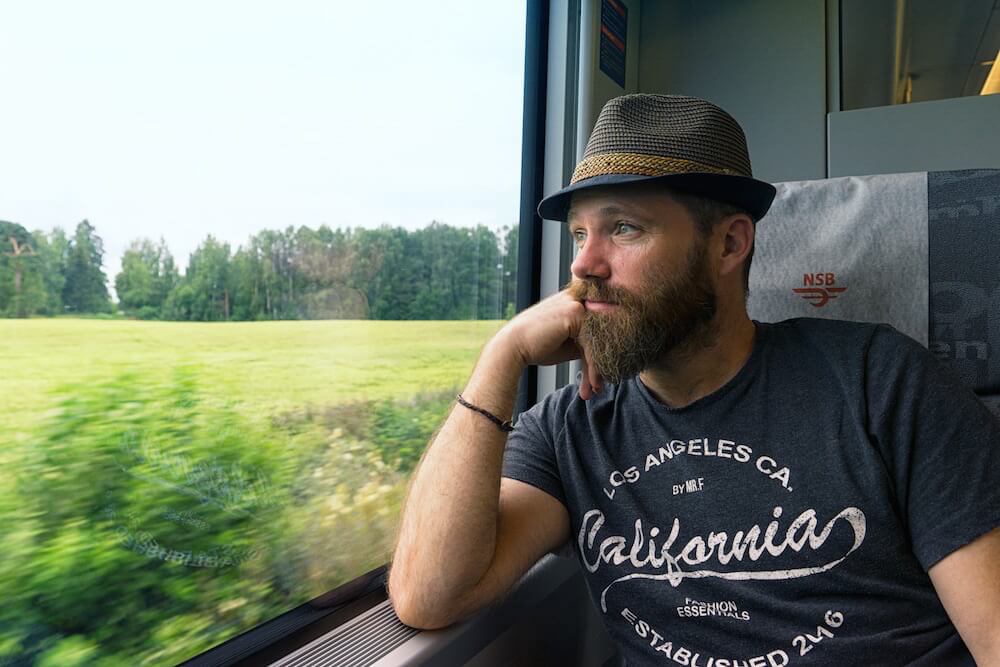
Add to that, Norway’s scenic train journeys are tourist attractions in their own right. And, unlike most other experiences in Norway, it can actually be done on a relatively small budget, either by planning well in advance and sacrificing on-the-fly flexibility, or by opting for a Norway rail pass, which can often work out to the same cost (or cheaper) compared to buying discounted tickets well in advance, while also allowing maximum flexibility.
Being sold on using the train to get around Norway ourselves, we thought we’d put together a guide covering what we learned during our trip research and our own travels around the country…basically, a 101 Guide all about getting around Norway by train. We hope it helps you plan your own trip!
What You’ll Find in This Post
Skip Table of Contents to Keep Reading ↓
- Norway by Train: Overview of Norway’s Rail Network & Trains
- Best Train Rides in Norway: The Most Beautiful Train Trips in Norway to Include on Your Trip
- What You Need to Know About Train Travel in Norway
- Norway by Train Itineraries
Pin this Post
Norway by Train: Overview of Norway’s Rail Network & Trains
Norway’s Railway Network stretch for more than 3,000 km (1864 miles) across Norway, with a total of over 4000 km (2485 miles) of lines, 336 stations, 775 tunnels and more than 3,000 bridges. It spans from Kristiansand in the south all the way north to Bodø; and from Bergen in the west, east to the Swedish border. The main hub is Oslo Central Station, Oslo S for short.
Fun fact: all trains that run in Norway, and all power that the Jernbaneverket (the Norwegian National Rail Administration) itself uses is produced by hydropower, which means all trains now only run from renewable energy and are CO2 neutral!
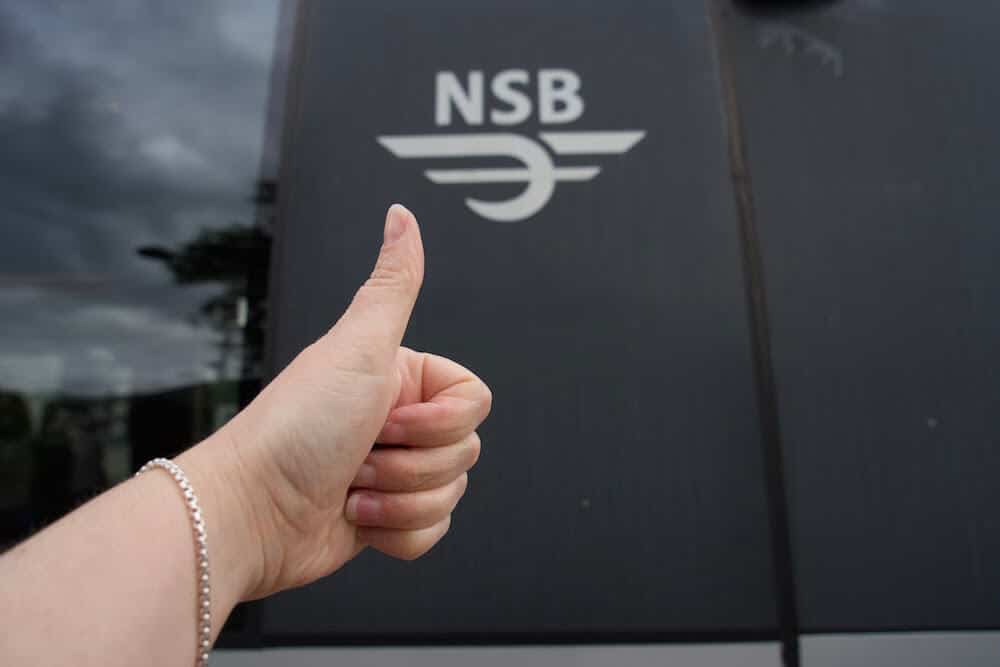
Best Train Rides in Norway: 5 Most Beautiful Train Trips in Norway to Include on Your Trip
A Must Do Norway Train Trip: The Bergen Line (Bergensbanen)
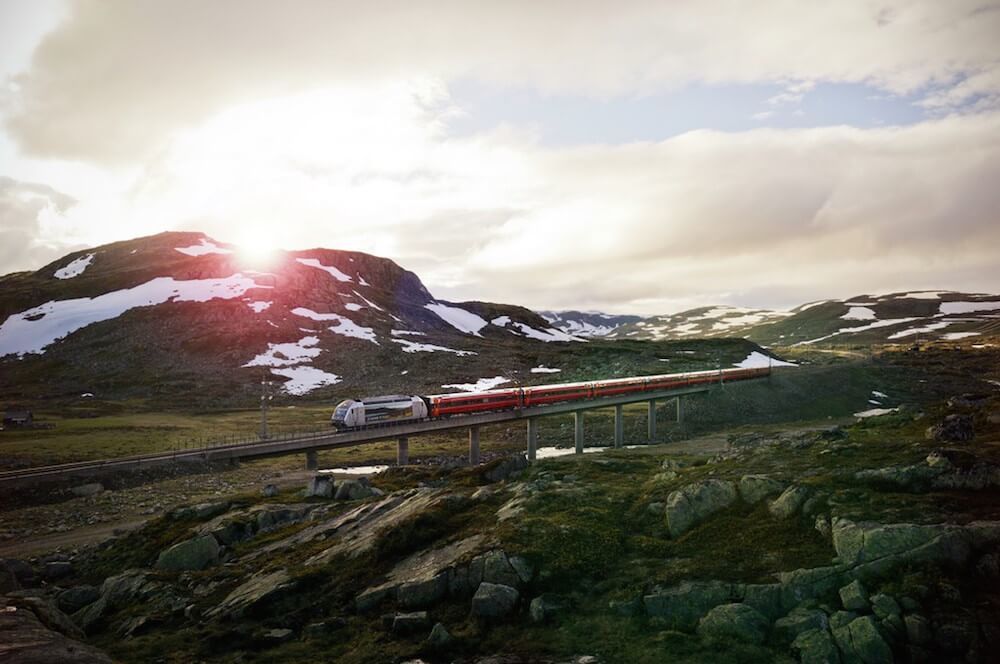
One of the most famous Norway train journeys is the Bergensbanen, which has been voted one of the world’s most scenic train rides by Lonely Planet. It connects Norway’s two largest cities, Oslo and Bergen, and runs over Hardangervidda, Europe’s highest mountainous plateau at 1300 meters (4265 feet) above sea level. The line is some 500 kilometers (311 miles) long and both starts and ends by the sea!
Along the way, you’ll pass through the Hallingdal valley, Hardangervidda National Park, and gorgeous ski resort towns like Geilo and Voss, both worth a visit during summer and winter. The mountains are covered with snow between October and April, and during these months the trains are often equipped with a snow plow in front.
The Bergen line is also an ideal starting point if you want to explore the gorgeous Norwegian fjords. We also suggest pausing your journey at Myrdal, so you can take a roundtrip ride on the spectacular Flåm Railway, before continuing on your way. More details on that further down.
Highlights of the Oslo Bergen Train
Finse, at an elevation of 1,222 meters (4009 feet) above sea level, is the highest station on the entire Norwegian railway network. For any Star Wars fans out there, the scenes set on the ice planet Hoth in The Empire Strikes Back were filmed in Finse.
If you stop in Finse, you should also check out the Rallarmuseet, a museum that tells the story of buidling the high altitude stretch of the Bergen Line. If you stay the night, check out Finse 1222, a 108-year-old hotel that also makes a great base for biking the Rallar Road or hiking Hardangerviddda, one of Europe’s largest mountain plateaus.
Another well-known attraction in the area is Hardangerjokulen, mainland Norway’s sixth largest glacier. A tour on the glacier is highly recommended and can be done in 5 to 7 hours. The starting point for many of the tours is Finse train station.
And then, of course, there’s Oslo and Bergen, the starting and ending points on this line. We were pleasantly surprised by Oslo: how green and outdoorsy it is; how many cultural activities there are to keep you busy; and the sheer pace of change as the city remakes itself. Bergen met us with rain, and barely relented the entire time we were there, but we still managed to explore, and to capture a few photos during short moments of dry skies.
Read More About Oslo
Is the Oslo Card Worth It? II Highlights from Oslo: What We Loved About Norway’s Capital II 7 Random Reasons to Fall in Love with Oslo
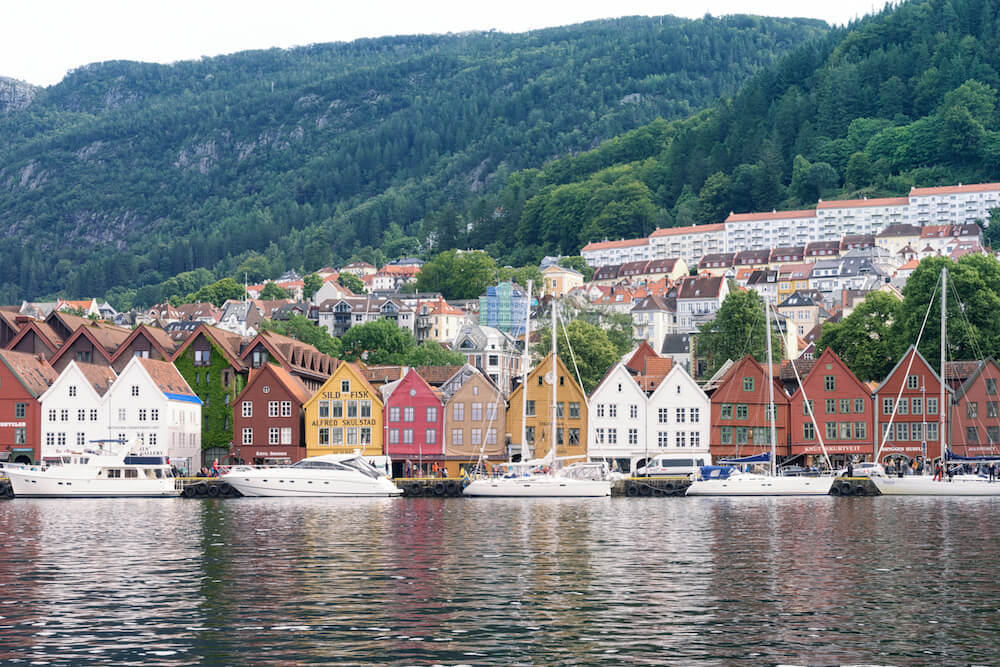
How to: Bergen to Oslo Norway Train
The Oslo to Bergen trip takes 7 hours, and there are 4 daily departures. Tickets cost NOK 913 (US $112) for a standard one-way ticket, and between approximately NOK 249 to 549 (US $31 to $67) for discounted (minipris) tickets (we’ve described the main differences between the standard and minipris tickets below in Buying Tickets section, below).
The last departure of the day is an overnight train, and you can purchase a sleeping car supplement for NOK 930 (US $114) on top of your ticket. Compartments contain two beds, and arrangements for a sleeping compartment should be made well in advance, as they sell out quickly.
If you’re travelling on a Norway rail pass (either an Interrail Norway or Eurail Norway pass), the ticket itself is free, but you do require a seat reservation on this train, as it fills up fast! North Americans purchasing a Eurail pass via Rail Europe can also make seat reservations at the time of pass purchase via the RailEurope website. If you want more flexibility, you can also make the reservation once you’re in Norway, although there’s a chance you won’t get the train you want, especially in high season. The ticket office at any train station in the country should be able to do this for you, and it’s free to do with your rail pass.
The Best Norway Train Trip: The Flåm Rail (Flåmsbana)
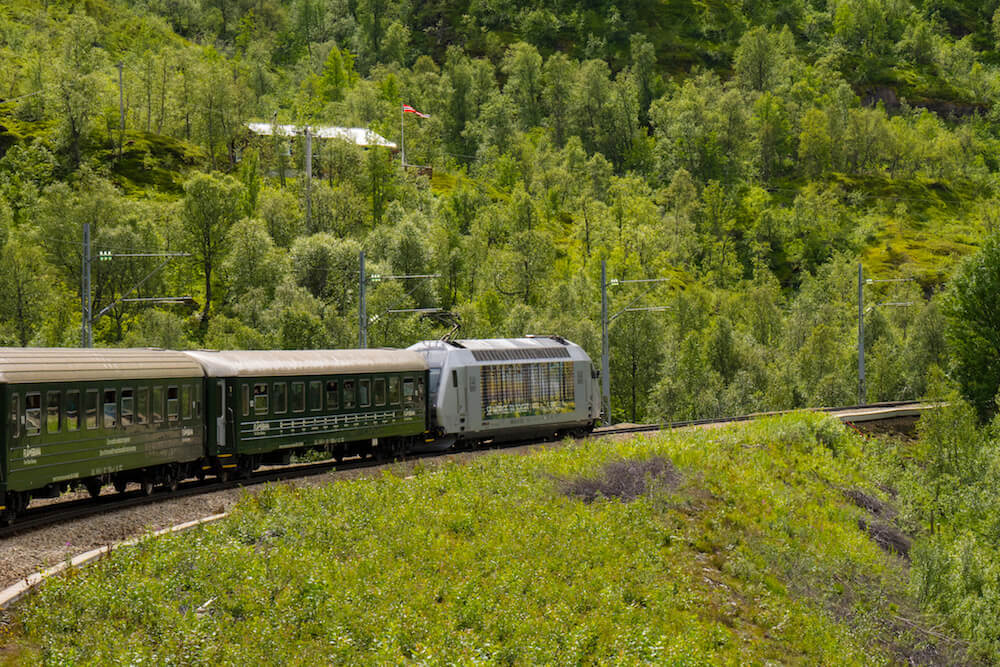
The Bergen Line’s sideline, the spectacular Flåm Railway, is one of the steepest standard-gauge railways in the world, and one of the most breathtaking Norway train routes. In just one hour, the train takes you from Myrdal station at 867 meters (2825 feet) above sea level, to sea level, dropping you at the Sognefjord in Flåm. Along the way, you’ll travel through 20 tunnels, stop at a powerful waterfall (and pass many more), and see some of the very best scenery Western Norway has to offer. One trip up and down might not be enough!
Highlights of the Flåm Line
One of the most exciting attractions along the way is the impressive Kjosfossen waterfall, where the train stops for a few minutes to allow passengers the chance to see the waterfall up close and get some photos. During summer, an actress dressed as a Huldra (a seductive forest creature from Norwegian folklore) dances in front of the waterfall. If you decide to spend some time in Flåm, stop by the Railway Museum next to the train station to see old locomotives and learn about the construction of the line (which is interesting, even if you’re not a train buff). Flåm is also a great place for hiking, and one of the easiest hikes (more like a leisurely stroll) is to the nearby 17th-century Flåm Church, 3km (1.86 miles) from the train station. It’s about a 1-hour walk each way.
The main reason to stay in Flåm, however, is to catch a ferry to the the UNESCO World Heritage listed Nærøyfjord, one of the world’s most beautiful fjords. There are shuttle buses from Flåm station that correspond with the ferries, and the entire round trip journey takes about 3.5 hours. Combining a trip on the Bergen Line and the Flåm Line with a fjord cruise is a very popular itinerary. Alternatively, you can also chose to take an express boat from Flåm to Bergen, and then do the Bergen Line all the way back to Oslo.
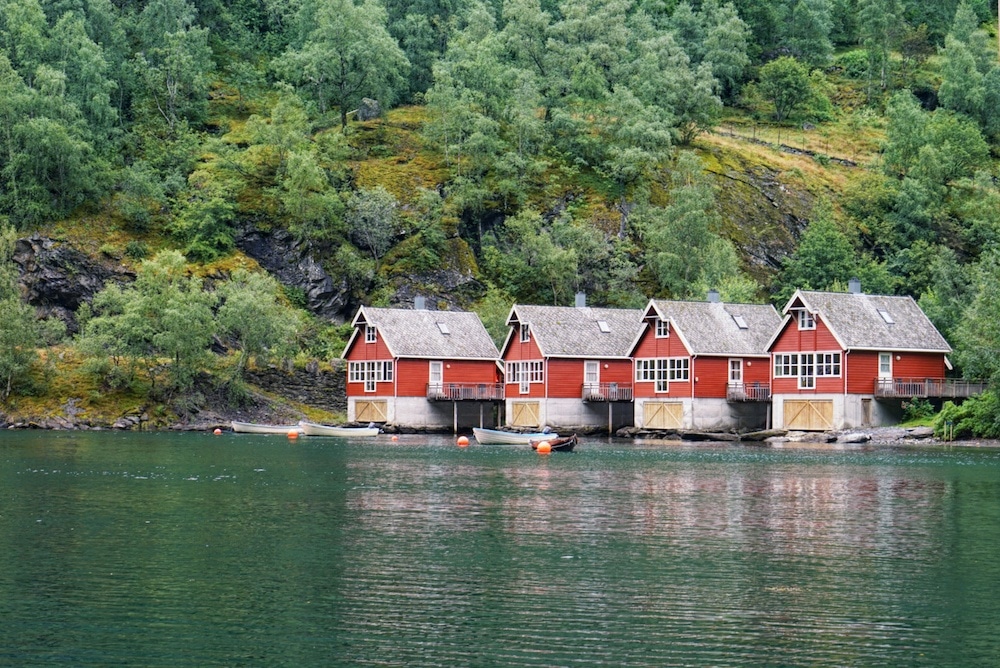
Tips for Riding the Flam Line
The town of Myrdal, a stop on the Bergen to Oslo line, is the jumping-off point for the Flam line. Boarding the train in Myrdal, the journey to Flam is just shy of an hour, but is filled with spectacular scenery along the entire route. We recommend sitting on one side of the train on the way there, and the other side on the return journey, as both sides of the train have something worth seeing. Worth noting, some of the train’s windows open, but many do not. If getting great photos is important to you, your best best is lining up very early on the return journey. On the Myrdal-Flam journey, the queue isn’t controlled, so you have to be pretty aggressive to board the train first and get a seat with an opening window, which is never pleasant. On the return journey, however, the line-up is controlled when it’s busy. We were first in line, and were able to take our pick of the seats with opening windows, allowing us to capture some nice photos along the way!
The Flam line is privately owned and operated, and isn’t part of the NSB network. Tickets are NOK 360 (US $44) for a single, and NOK 480 (US $59) for a return. If you have a Eurail Norway pass, you’re entitled to a 30% discount. Although the Flam line isn’t run by the NSB, you can purchase tickets for this train at NSB stations, and make reservations. Reservations are essential in the high season. We left our reservations until the last minute, and had to take the first train out of Bergen in the morning to make it work!
A Lesser Known Norway Train Trip: The Dovre Line (Dovrebanen)
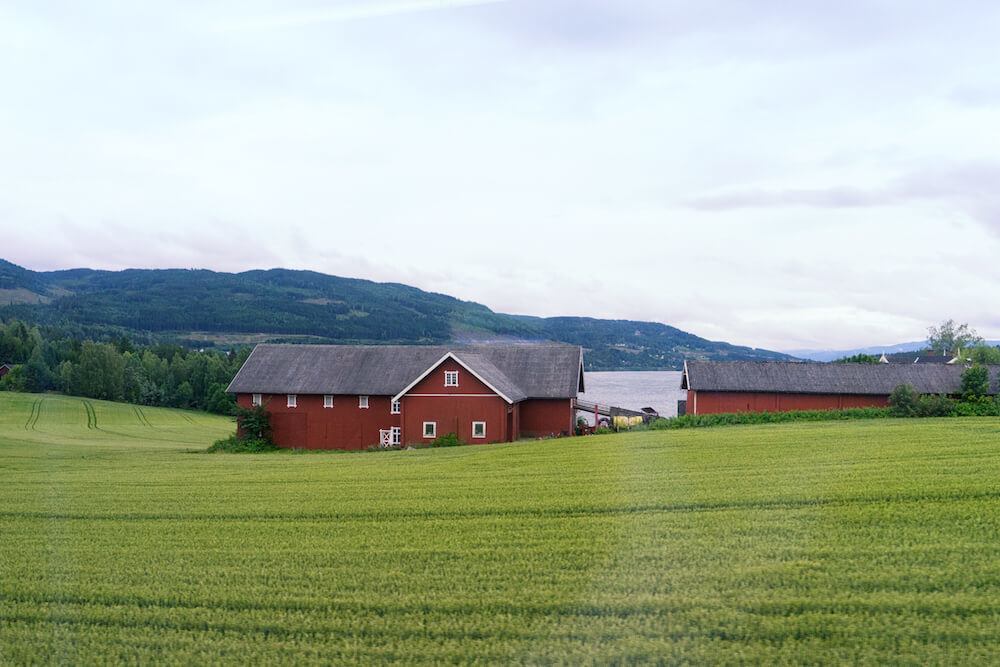
Another one of the most important Norway train routes is the Dovre Railway that runs between Oslo and the historic city of Trondheim. The entire 553 km (344 miles) journey takes about 7 hours, with the highest point being Hjerkinn station at 1024 meters (3360 feet) above sea level. Along the way, it passes through the beautiful Gudbrandsdalen valley, with its rich cultural heritage, and across Dovrefjell National Park, home to a population of over 300 wild Muskox. If you want to travel at night, the Dovre Line also runs night trains with comfortable sleeping compartments (although you might miss the scenery, depending on time of year and hours of darkness).
Almost parallel to the Dovre Line, a little further east, runs the Røros Line which also connects Oslo with Trondheim. Not surprisingly, the most visited stop along the way is Røros, a little mountain town especially popular around Christmas. The entire city is UNESCO World Heritage listed, and is like a living museum, with a rich history as a mining town and a very distinctive atmosphere of idyllic streets and old wooden houses.
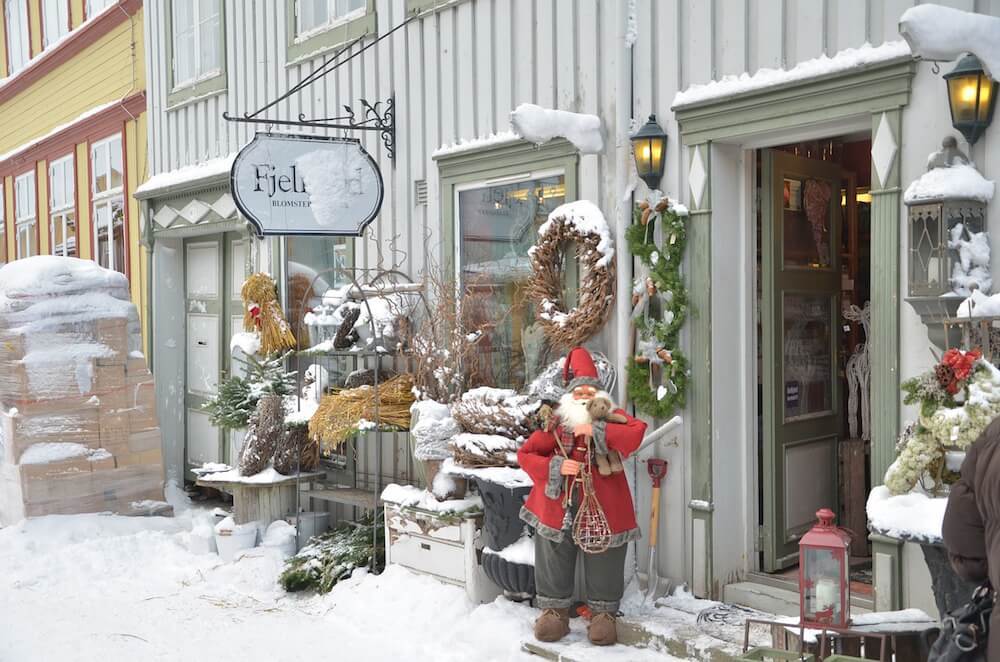
Highlights of the Dovrebanen
In addition to Gudbrandsdalen and Dovrefjell, Lillehammer town is a great option for outdoor enthusiasts. With five ski resorts, Norway’s largest open air museum, Hunderfossen Family Park and several other activities, Lillehammer is a great stop for active travelers.
If you’re a keen hiker, you might want to spend a day in Jotunheimen National Park. Jotunheimen is one of Norway’s most alpine areas with rugged peaks and vast valleys covered in snow and ice most of the year. One of Jotunheimen’s most popular tourist attractions is the narrow Besseggen ridge that runs between a green and a blue lake. This is also where you’ll find Galdhøpiggen, the highest mountain in Northern Europe at 2469 meters (8100 feet) above sea level. Otta is the nearest train station, and from there a bus will take you the rest of the way, about 1.5 hours.
How to: Dovre Line Train
The Oslo to Trondheim trip takes about 7 hours, and there are multiple departures throughout the day. Tickets cost NOK 965 (US $118) for a standard one-way ticket, and approximately NOK 249 to 849 (US $31 to $104) for discounted (minipris) tickets.
If you’re travelling on a Norway rail pass (either an Interrail Norway or Eurail Norway pass), travel on the Dovre line is free. While seat reservations are recommended, they’re not required on this train. North Americans purchasing a Eurail pass via Rail Europe can also make seat reservations at the time of pass purchase via the RailEurope website. If you want more flexibility, you can also make the reservation once you’re in Norway, although there’s a chance you won’t get the train you want, especially in high season. The ticket office at any train station in the country should be able to do this for you, and it’s free to do with your rail pass.
This train also offers sleeper options. Compartments are NOK 930 (US $114), in addition to your ticket, and contain two beds. Arrangements for a sleeping compartment should be made well in advance, as they sell out quickly.
A Norway Train Trip that Takes you to the Fjord Region: The Rauma Line (Raumabanen)
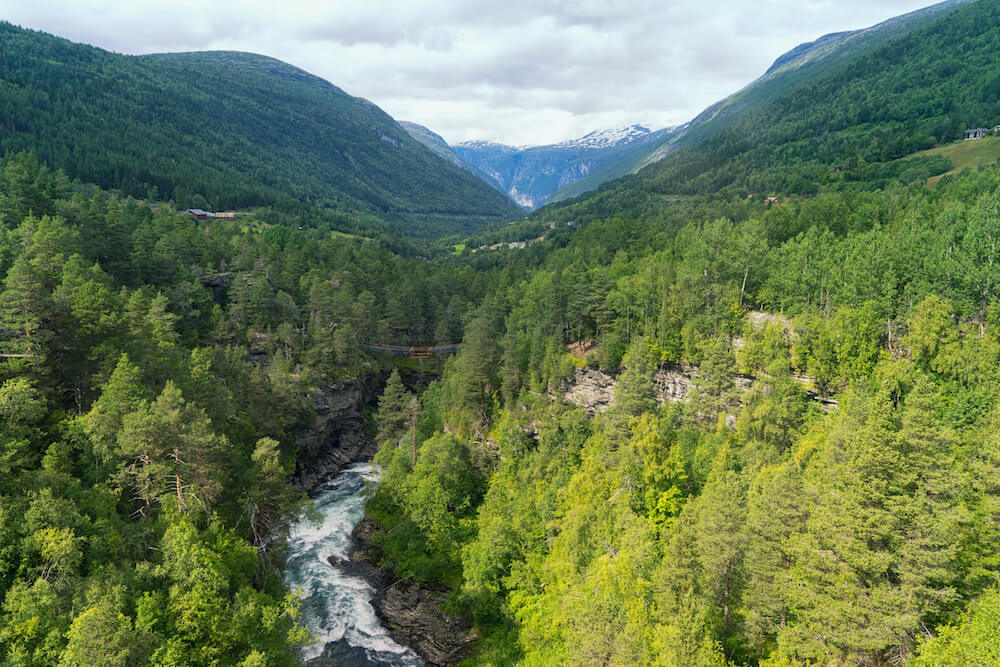
The Rauma Railway, a sideline to the Dovre Line, runs between Dombås in the Gudbransdalen Valley and the beautifully-located fjord town of Åndalsnes. The 1 hour 40 minute ride has been called Europe’s most scenic train journey, and offers passengers a chance to enjoy one of Norway’s most spectacular natural regions, with plenty of photo opportunities along the way!
If you plan to visit Norway’s most famous attraction, the Geirangerfjord, and Ålesund, a colorful Art Nouveau town, it makes sense to add the Rauma line to your itinerary!
Highlights of the Rauma Line
Toward the Åndalsnes end of the journey, the train will cross the historic Kylling (Chicken) Bridge, one of 32 bridges on the Rauma Line. One of the most famous railroad bridges in Norway, it is also one of the largest single construction projects on the Rauma Line.
Another highlight is the Troll Wall, the tallest vertical rock face in Europe, standing over 1000 meters (3281 feet) from its base to its highest point.
Åndalsnes, the alpine town by the fjord, is an attraction in itself, especially for outdoor lovers. Hiking the Romsdalseggen ridge is referred to by many as Norway’s most beautiful trekking experience. From the top of the ridge you have a 360-degree view of some of the wildest mountains in Norway. Buses to the starting point depart from Åndalsnes Train Station every morning from July 1st through September 30th.
If you’re not the outdoorsy type, a few hours in Åndalsnes to make the connection from the train to the Geiranger bus, via the Trollstigen Road, should be enough. As this is the fjord region, Åndalsnes is the end of the line for the train, but you can continue via boat, bus or car. We continued via bus to Geiranger, with the Trollstigen being one of the top highlights of our trip, before arriving at Norway’s most famous fjord. Surrounded by landscape that looks like something out of a fairytale, the Geirangerfjord is the jewel of the Norwegian fjords. Have a bite to eat, go on a cruise or just enjoy the incredible scenery. Don’t miss one of the best photo ops in Norway, Flydalsjuvet, just a couple of minutes up the road from Geiranger Hotel!
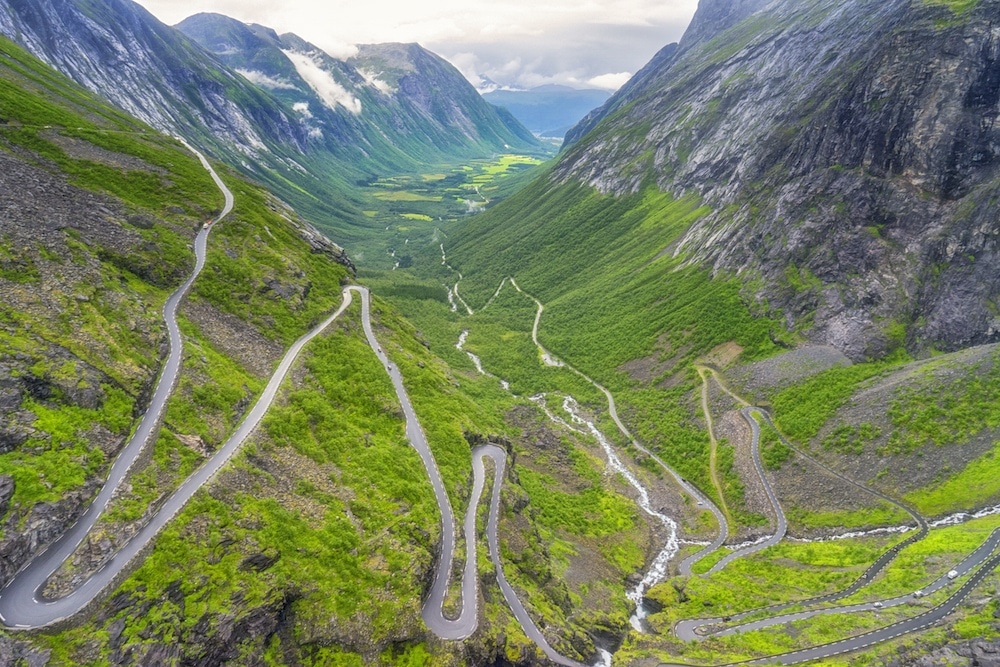
How to: Rauma Line Train
The Dombås to Åndalsnes trip is 100 km (62 miles) and takes about 1 hour and 40 minutes. From the end of May to the end of August, it runs as a sightseeing train, meaning there are recorded announcements alerting you to the scenery along the way, along with free printed guides with info about your journey. You should also expect it to be fairly busy during this time of year. Tickets are NOK 264 (US $35). At the time of writing, we weren’t able to find discounted tickets any cheaper than NOK 249 (US $31).
If you’re travelling on a Norway rail pass (either an Interrail Norway or Eurail Norway pass), travel on the Rauma line is free. While seat reservations are recommended, they’re not required on this train. North Americans purchasing a Eurail pass via Rail Europe can also make seat reservations at the time of pass purchase via the RailEurope website. If you want more flexibility, you can also make the reservation once you’re in Norway, although there’s a chance you won’t get the train you want, especially in high season. The ticket office at any train station in the country should be able to do this for you, and it’s free to do with your rail pass.
Åndalsnes is the end of the line, but there are train connections from Dombås to get you to Oslo or Trondheim. From Åndalsnes, you can take a public bus to Geirganger Fjord in the summer, running twice a day and stopping at Trollstigen for views and photos! Tickets cost NOK 264 (US $32) for a standard one-way ticket, but do note this bus is seasonal, and the Trollstigen closes during winter, typically from October to May.
There are other connections from Åndalsnes, and we found the local tourism website to be most helpful in planning our route, and figuring out costs and timing.
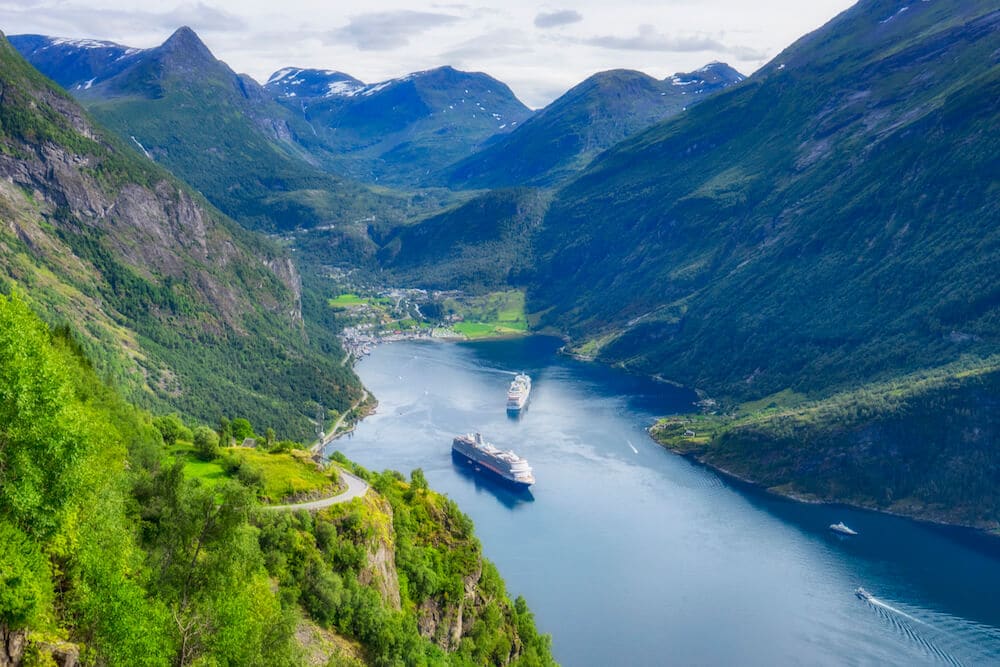
A Norway Train Trip to the Arctic Circle: The Nordland Line (Nordlandsbanen)
The Nordland Line runs from Trondheim to Bodø and has been named one of Europe’s eight best night train journeys by Lonely Planet. Running for 729 km (453 miles), it is Norway’s longest single train journey, and takes about ten hours. It crosses 293 bridges, runs through 154 tunnels, and passes the Arctic Circle at 66º north! During summer this means the midnight sun will offer great views day and night, as the sun hardly sets. The journey isn’t as visually pleasing as some of Norway’s other popular railway lines, but it’s still worth the trip, and a great gateway to start exploring Norway’s north.
Highlights of the Nordland Line
When in Bodø you can visit the world’s strongest maelstrom (whirlpool), Saltstraumen. Every six hours, up to 400 million cubic meters of seawater forces its way through a narrow strait, forming powerful and dramatic whirlpools. For anyone who has ever doubted the sheer force and power of the sea, Saltstraumen will put that doubt to rest, putting you face to face with one of the strongest currents on the planet.
On clear evenings from September to April, you can see the Northern Lights in Bodø. You can spot it from several places in the city, like a rooftop or the harbor, but for the best experience go to Rønvikfjellet mountain, just a few km outside the city centre. Or take it one step further and go to the nearby Lofoten Islands, where you’ll have an even better chance of experiencing the incredible lights.
Lofoten is known for its dramatic scenery of mountains and peaks, vast open sea and sheltered bays of turquoise waters and white sandy beaches. You won’t believe how beautiful it is until you see it for yourself. Due to this diverse landscape, you can go hiking, fishing, skiing, deep water rafting, scuba diving or surfing, all in one place. From Bodø, the Lofoten Islands are easily reached by ferry or express boat in around 3 hours.
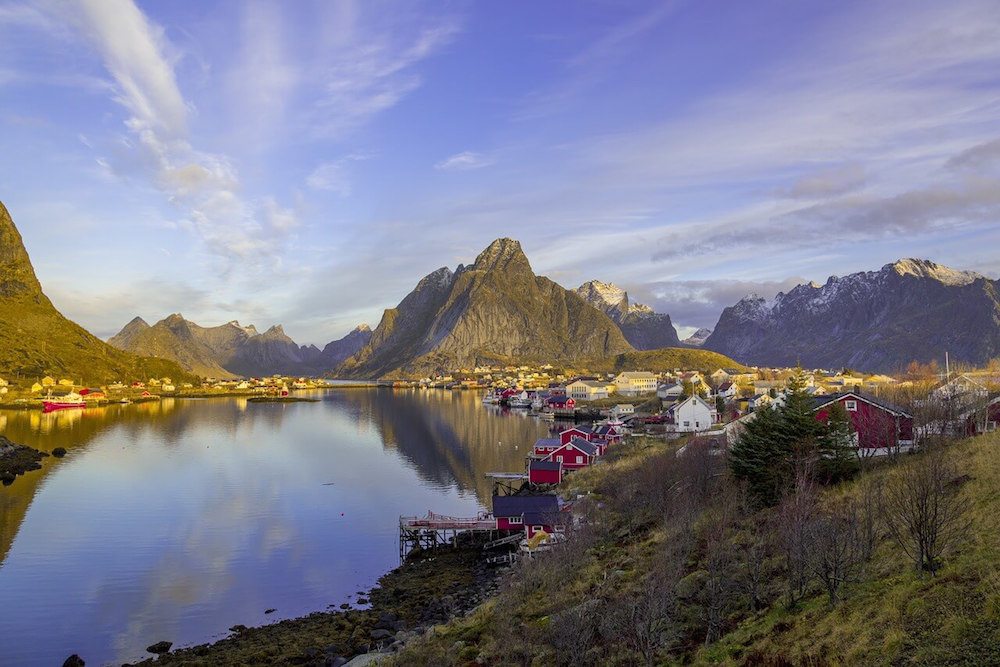
How to: Nordlandsbanen Line Train
The Trondheim to Bodø trip takes about 10 hours, and you can opt for either daytime departures or a night train. Tickets cost NOK 1088 (US $134) for a standard one-way ticket, and approximately NOK 249 to 849 (US $31 to $104) for discounted (minipris) tickets. Sleeper supplements are NOK 930 (US $114) per compartment, which contain two beds, and should be made well in advance.
If you’re travelling on a Norway rail pass (either an Interrail Norway or Eurail Norway pass), travel on the Nordland line is free. While seat reservations are recommended, they’re not required on this train. North Americans purchasing a Eurail pass via Rail Europe can also make seat reservations at the time of pass purchase via the RailEurope website. If you want more flexibility, you can also make the reservation once you’re in Norway, although there’s a chance you won’t get the train you want, especially in high season. The ticket office at any train station in the country should be able to do this for you, and it’s free to do with your rail pass.
What You Need to Know About Train Travel in Norway
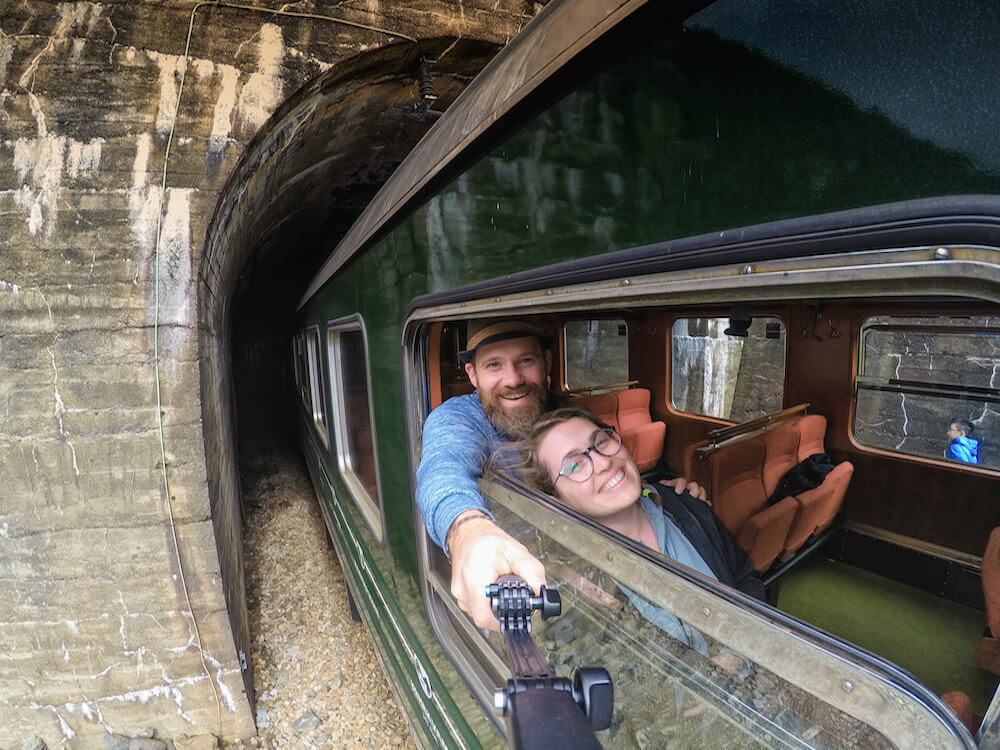
Buying Tickets for a Norway Train Trip
All trains in Norway, with the exception of the Flåm Line, are operated by NSB, the state railway company. Their website has a booking system that is available in English, so it’s quite easy to book tickets online at the NSB website. You can buy Norway train tickets from machines at most stations, from the customer-service counters, or on-board from the conductor, for an additional fee.
If you plan to go on longer train journeys through Norway, know your itinerary, and/or plan to take multiple train trips during your Norway vacation, then you should take advantage of discounted minipris tickets or consider a Norway rail pass.
Minipris tickets are released for every route in limited numbers, and are sold at a fraction of the price of regular fares. To get the cheapest price, the tickets must be bought over the internet, the app or from machines at train stations. Minipris tickets are available for purchase from 90 days up until one day in advance, and you have only four hours to cancel the tickets after purchase. Once the four-hour window is over, you can neither exchange nor cancel the tickets. While the minipris tickets can be a great deal, they are also completely inflexible, so you have to have your itinerary set in stone if you plan to rely on these tickets, and you need to purchase well in advance to get the best deal.
North Americans who plan on purchasing a Eurail pass via RailEurope can make train reservations (which are separate from the ticket) via the website at the time of purchase. You can also chance it, and make the reservation once you’re in Norway with your pass. The ticket office at any train station in the country should be able to do this for you, and it’s free to do with your rail pass.
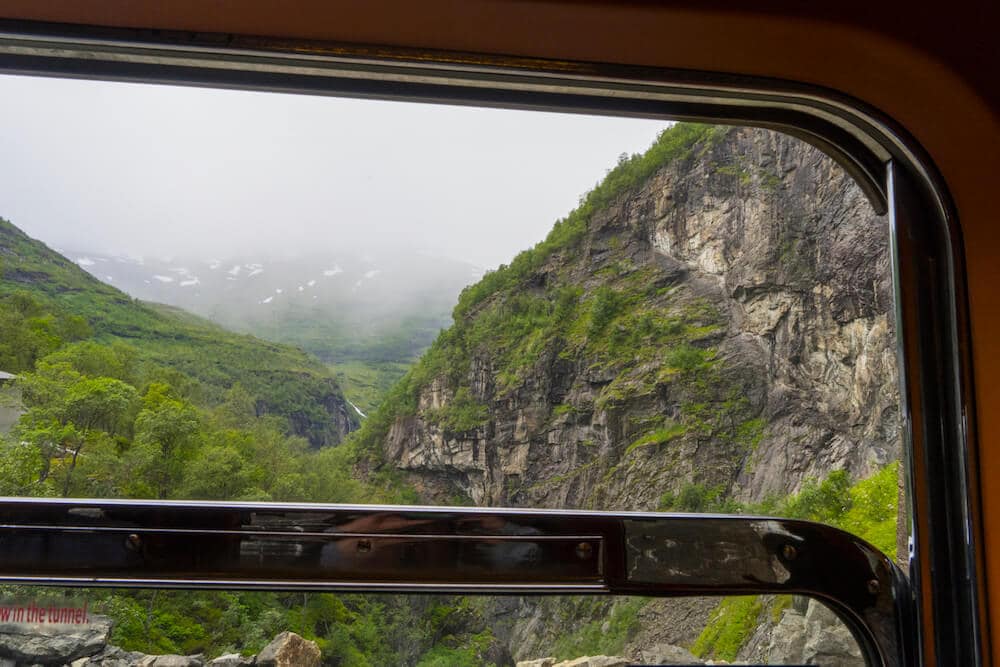
An Introduction to Norway Rail Passes
What are the different options for a Norway Rail pass?
European train passes are currently broken down by your country of residency. If you’re a European resident, you need to use the Interrail Norway pass.
If you’re a resident of any country outside of Europe, however, you need a Eurail Norway pass. This section primarily covers the Eurail pass. For more information about Interrail Norway passes, you can check the Interrail website.
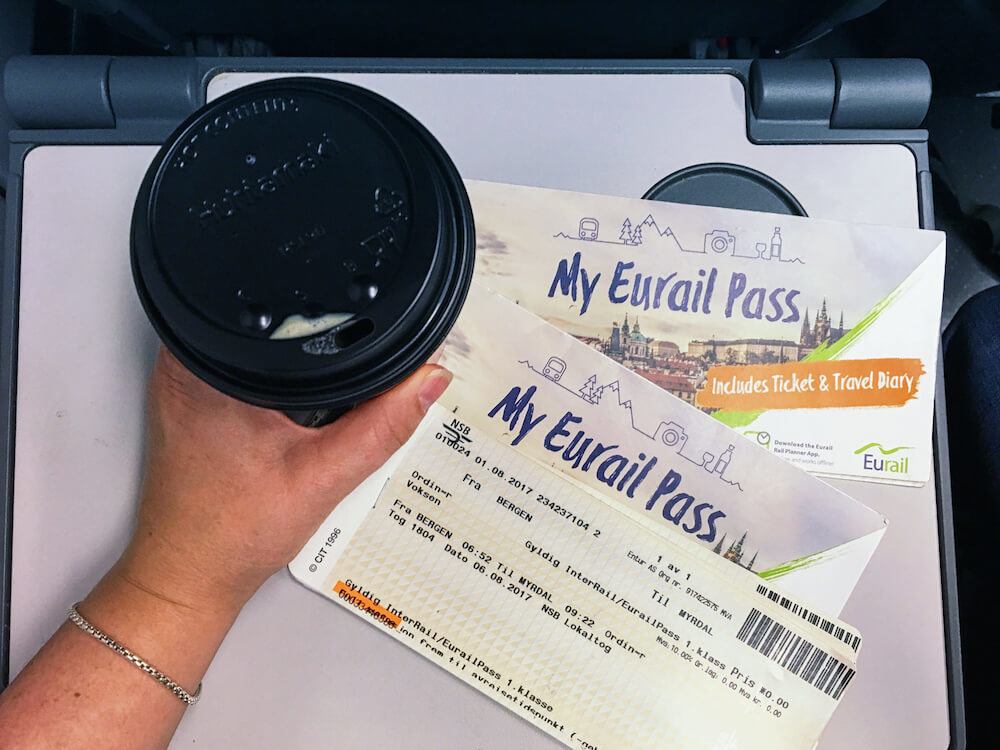
Eurail Norway Pass, and Other Passes to Consider
Eurail passes have a ‘build your own’ system, where you choose the number of days you want to travel by train within a set duration, the duration in which you can use those days, and the country or countries in which you want to use the pass. Depending on the pass you buy, you can choose anywhere from 1 day of actual train travel up to 3 months of travel, with options for pass duration also running for 1 day to 3 months.
Note, the days of travel only refer to the actual days you plan to be on the train, whereas the total duration refers to the window in which you can use that one day of train travel. So if you buy a pass that’s valid for 7 days of train travel within one month, you can take the train as much as you want during 7 consecutive or nonconsecutive days within a 30-day period.
In terms of the countries you can use the pass, you can purchase it for one country (in this case, a Eurail Norway pass) or multiple countries. There are specific regional passes as well, including a Eurail Scandinavia pass that covers Denmark, Finland, Norway and Sweden, and the Eurail Select Pass, which lets you choose bordering countries to include in your pass.
If you plan on travelling beyond Scandinavia, you might want to look at the Eurail Global Pass, which covers travel in 28 European countries.
How much does a Norway rail pass cost: An overview of Norway rail pass prices
Eurail Norway Pass
The Eurail Norway pass is available for 3, 4, 5, or 8 days of travel within a one-month period. Adult prices range between $237 for the 3-day pass and $417 for the 8-day pass; discounted passes are available for youth (aged 12 to 28), and children under 12 are free.
Compare Options and Prices on the Eurail Norway Pass
Eurail Scandinavia Pass
The Eurail Scandinavia pass is available for 3, 4, 5, or 8 days of travel within a one-month period, and is available for both first class and second class fares. Adult prices range between $275 for the 3-day second-class pass and $564 for the 8-day first-class pass; discounted passes are available for youth (aged 12 to 28), and children under 12 are free.
Compare Options and Prices on the Eurail Scandinavia Pass
Build Your Own: Eurail Select Pass Combining 2, 3 or 4 Bordering Countries + the Global Pass
The beauty of Eurail is you can truly build your own pass. The Select Pass lets you travel within 2, 3, or 4 bordering countries, for 5, 6, 8, or 10 days within two months. So if you’re planning to hit up Norway, Sweden, Denmark, and Germany, for example, you can build your own pass that will allow you to do just that.
Finally, it’s worth noting there is a Global Pass that let’s you travel through all 28 European countries covered by the Eurail pass for up to 3 months. Adult passes start at $596 for 5 days of train travel within 15 days, and go up from there, so you can choose the amount of travel time and validity that makes sense for your trip.
Compare Options and Prices: Select Pass // Global Pass
Comparing Norway Rail Passes to Minipris Tickets
Norway’s Minipris system is awesome…if you can get the deals. And that’s a solid “if” – unless you’re an excellent planner, and time things right, you’re likely to not get the best minipris price
For example, on a random Oslo to Bergen search for a train running 5 weeks from the time of research, the standard price is 913 NOK (~$112), and the minipris deals range from 249 NOK to 649 NOK (~$31 to $80). That’s a massive savings range, and the cheapest deal (249 NOK) was quite limited in its availability.
So, you’re faced with the question: do you want to spend your limited vacation time waiting for the cheapest train, or do you want to get on the most convenient train for you, and spend your time enjoying Norway? For us, it was a no brainer – we only had a week to travel around Norway, and we wanted to pack as much as possible into the experience as possible. Besides the fact that we’d left our itinerary planning too late to get the best Minipris deals, flexibility was the deciding factor in using a train pass for us.
In terms of actual cost effectiveness, I did a little analysis covering Oslo to Trondheim, Trondheim to Åndalsnes, and Bergen to Oslo, and compared it to the cost of a 3-day Eurail Norway Pass. If you’re able to get the cheapest deals on the minipris, it saved $49 as compared to the Eurail 3-day pass ($171 for the minipris tickets, vs. $220 for a 3-day Norway rail pass). If, however, you miss the best minipris deals and pay the most expensive range of the minipris deals, it’s actually MORE EXPENSIVE to use minipris by $33, and you get zero flexibility.
For most travellers, we think the Eurail pass is a better deal than the minipris, especially if you’re travelling on a vacation and want to see and do as much as possible, while still retaining some flexibility.
Norway Train Tours: Norway by Train Itinerary Ideas
You can read about our trip around Norway, which combined train, boat, Hurtigruten ferry, and a one-day car rental, in our Short and Sweet Norway Itinerary. However, we wanted to put together a few more ideas as well, which we’ve outlined below as a one-week and two-week Norway itinerary.
Norway by Train Itinerary: What to See and Do Exploring Norway by Train in One Week
Day 1 – Oslo to Lillehammer by train (or straight to Åndalsnes if you want to hike Romsdalseggen the next day)
Day 2 – Lillehammer to Åndalsnes by train in the morning
Day 3 – Bus from Åndalsnes to Ålesund in the morning – Explore the city then catch Hurtigruten from Ålesund to Bergen at night (13 hours)
Day 4 – Explore Bergen and take Fløybanen funicular up to Mount Fløyen
Day 5 – Bergen to Finse by train via Flåm where you go on a fjord cruise
Day 6 – Explore Finse, visit the museum and hike Hardangervidda or go on a glacier tour
Day 7 – Bike the Rallar Road from Finse to Haugastøl before taking the train back to Oslo
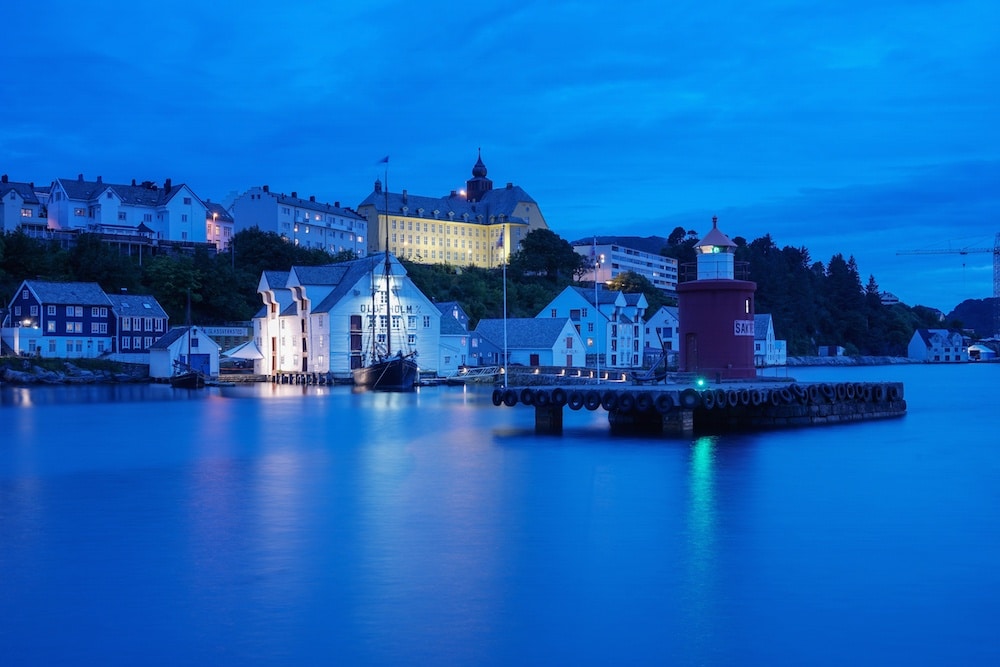
Norway by Train Itinerary: What to See and Do Exploring Norway by Train in Two Weeks
Day 1 – Take the Røros Line from Oslo or Gardermoen to Røros.
Day 2 – Explore Røros and the surrounding area
Alternatively
Day 1 – Take the Dovre Line to Otta
Day 2 – Catch a bus to Jotunheimen and explore the beautiful National Park
Day 3 – Continue by train to Trondheim in the morning and spend the day there
Day 4 – Night train from Trondheim to Bodø – Ferry from Bodø to Moksnes in Lofoten
Day 5 – Explore Lofoten – Svolvær, Henningsvær etc.
Day 6 – Hike/climb Svolværgeita or The Devils Port
Day 7 – Catch a ferry back to Bodø and explore the city – Take the night train to Trondheim
Day 8 – Take the train to Åndalsnes and spend the day enjoying the beautiful sceney
Day 9 – Explore Geiranger and the surrounding attractions by bus from Åndalsnes
Day 10 – Bus from Åndalsnes to Ålesund in the morning – Explore the city then catch Hurtigruten from Ålesund to Bergen at night (13 hours)
Day 11 – Explore Bergen and take Fløybanen funicular up to Mount Fløyen
Day 12 – Bergen to Finse by train with a detour to Flåm where you go on a fjord cruise
Day 13 – Explore Finse, visit the museum and hike Hardangervidda or go on a glacier tour
Day 14 – Bike the Rallar Road from Finse to Haugastøl before taking the train back to Oslo
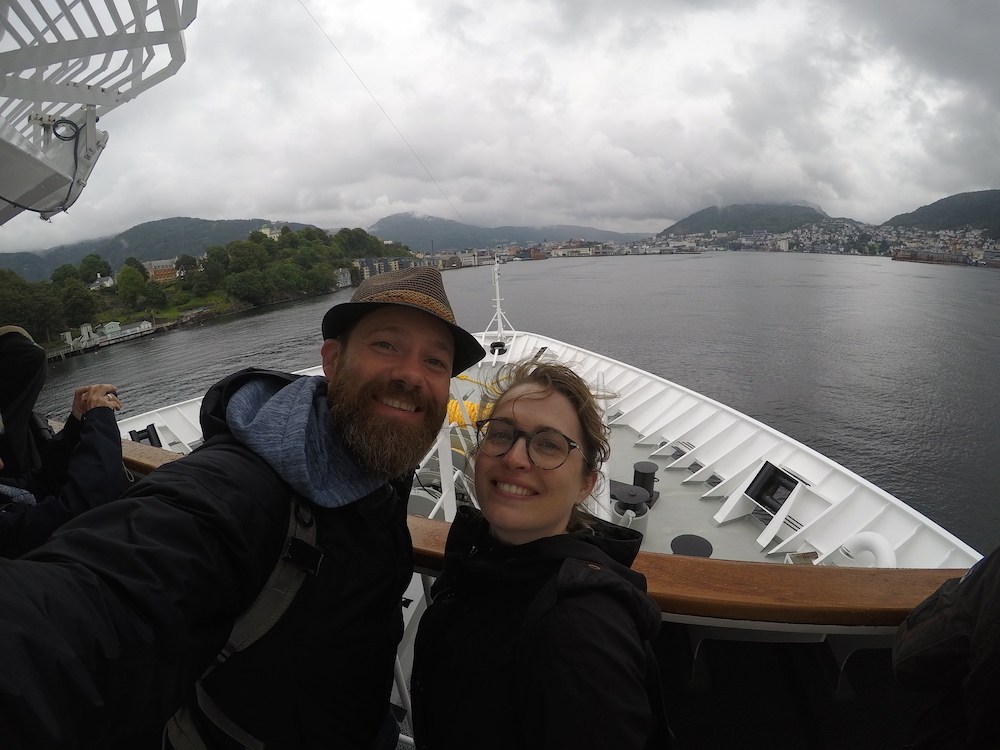
Read More Norway
You can read more about our travels in Norway in our Norway Archives, or check out some of the posts below!
- Norway in One Week: A Short and Sweet Norway Itinerary
- Is the Oslo Pass Worth It? A Cost Comparison and Review
- Highlights from Oslo: What We Loved About Norway’s Capital

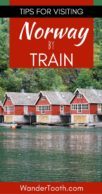

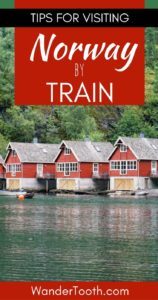
I absolutely love traveling by train. I did a roundtrip between Oslo and Trondheim with my dog a couple years ago and have been meaning to take another trip. I just booked the train from Oslo to Røros for the opening of their Christmas market in December and Bergen is definitely next on my list! Thank you for such an informative post, I’m going to look into some more of these routes. It’s a great way to travel especially in the winter when it can be slippery to drive and there are road closures :)
Hi Julia – It’s Always great to get comments like this, and we’re glad you find the post helpful. Røros looks amazing at Christmastime – enjoy!
Pingback: Where to go in Norway: The 10 Best Places to Visit in Norway
Planning to travel in March in Norway for 10 days what would be a suitable iternary and which fjords would be accessible
Hi, wow, that’s a loaded question :) I would suggest joining the Facebook group Scandinavia and Nordics Travel – Norway, Iceland, and beyond! which we help to moderate – there is a lot of excellent tips and suggestions that are current and up to date. Hope that helps – enjoy!